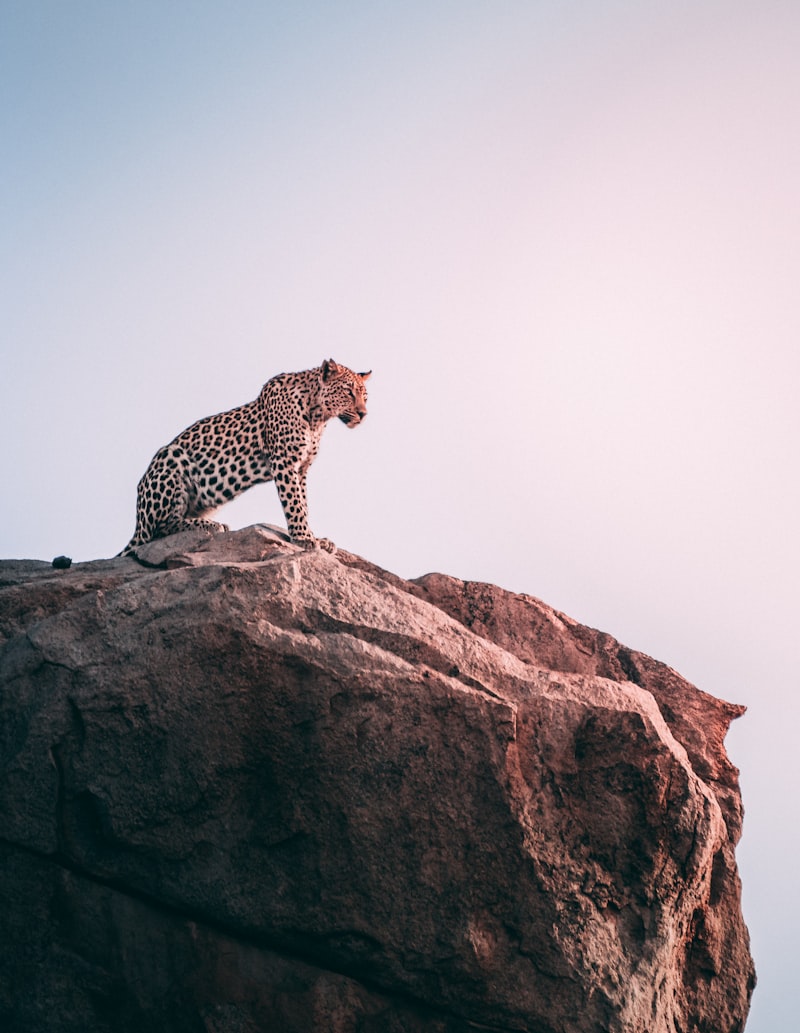Have you ever wondered about the breathtaking spectacle of wildlife migration? It’s a natural phenomenon that showcases the awe-inspiring resilience and instinct of animals across the globe. From the vast herds of wildebeest thundering across the Serengeti plains to the delicate monarch butterflies fluttering thousands of miles from Canada to Mexico, wildlife migration is a testament to the stunning diversity of life on Earth.
Imagine standing on the shores as thousands of majestic birds take flight in perfect synchrony, painting the sky with their graceful formations. Each species has its own incredible journey, driven by ancient rhythms and environmental cues that guide them with unwavering precision. It’s a reminder that despite our modern world, nature still holds mysteries that leave us in wonder.
Migration isn’t just about movement; it’s about survival and adaptation. Animals brave immense challenges – crossing treacherous terrains, navigating vast oceans, and enduring harsh climates – all for the promise of better feeding grounds, warmer climates, or safer breeding sites. It’s a heroic odyssey that unfolds every year, renewing the cycle of life in the most extraordinary ways.
The beauty of wildlife migration lies not only in its scale but also in its significance. It connects ecosystems across continents, influencing everything from plant distribution to predator-prey dynamics. As observers, we’re privileged to witness these epic journeys, gaining insights into the resilience of species and the delicate balance of our planet.
Next time you see a flock of geese overhead or catch sight of a whale breaching in the distance, think about the incredible distances they travel and the challenges they overcome. Wildlife migration is a marvel that reminds us of nature’s boundless wonders and the urgent need to conserve these vital pathways for generations to come.
Marvels of Nature: Witnessing the Epic Journeys of Wildlife Migration
Every year, nature puts on one of its most spectacular shows: the epic journeys of wildlife migration. Picture vast herds of wildebeest thundering across the Serengeti, or thousands of monarch butterflies painting the skies as they migrate across North America. These migrations, driven by instinct and survival, showcase the resilience and beauty of our natural world.


Migration is not just a journey; it’s a feat of endurance and determination. Animals travel thousands of miles, navigating obstacles from predators to geographical barriers. Take the Arctic tern, which holds the record for the longest migration in the animal kingdom, traveling from the Arctic to Antarctica and back each year. Such journeys are not just about reaching a destination but about adaptation and survival against all odds.
What drives these incredible journeys? For many species, it’s a matter of life and death. Animals migrate to find food, suitable breeding grounds, or favorable climates. The migration of caribou in North America, for instance, follows the changing seasons as they move to calving grounds where newborns can thrive without predators. These migrations are finely tuned to ecological cues, ensuring the continuation of species and ecosystems.
Imagine the marvel of witnessing a humpback whale breaching off the coast of Hawaii after traveling thousands of miles from its feeding grounds in Alaska. These migrations are not only vital for the animals themselves but also for the ecosystems they traverse. They distribute nutrients, control prey populations, and even shape landscapes through grazing and movement.
In a world where human impact increasingly threatens wildlife, these migrations serve as a poignant reminder of the interconnectedness of all life on Earth. They inspire awe and wonder, prompting us to consider our role in preserving these natural wonders. As we marvel at the epic journeys of wildlife migration, we are reminded of the resilience of nature and the importance of conservation efforts to protect these extraordinary spectacles for future generations.
Nature’s Grand Spectacle: Exploring the Beauty of Global Wildlife Migration
Imagine standing on the Serengeti plains, where the annual Great Migration of wildebeest, zebras, and gazelles paints the landscape in a moving tapestry of life. This iconic event sees over two million animals traverse vast distances in search of greener pastures, braving crocodile-infested rivers and lion-inhabited territories. It’s a breathtaking display of survival and adaptation, where each participant plays a crucial role in the ecosystem’s delicate balance.
In the Arctic, the polar bear’s journey across ice floes mirrors a quest for sustenance amidst a changing climate. These majestic creatures travel hundreds of miles to hunt seals, relying on their unmatched ability to navigate icy expanses and endure harsh conditions. Their trek symbolizes not only survival but also the challenges posed by environmental shifts on vulnerable species.
Meanwhile, beneath the ocean’s surface, marine migrations unfold with equal wonder. From the majestic humpback whales’ annual pilgrimage to breeding grounds in tropical waters to the mesmerizing ballet of sea turtles returning to their birthplaces to nest, these journeys are a symphony of life in motion.
Closer to home, the sight of migratory birds filling the skies evokes a sense of seasonal change and renewal. From the Arctic tern’s remarkable round-trip migration from pole to pole, covering over 40,000 miles, to the delicate monarch butterfly’s multi-generational journey from Canada to Mexico, these migrations highlight the interconnectedness of habitats across borders.

Indeed, wildlife migration transcends geographic boundaries, offering a profound glimpse into the wonders of nature’s resilience and adaptation. As we marvel at these epic journeys, we are reminded of our responsibility to preserve and protect the habitats that sustain these incredible migrations for generations to come.
From Savannas to Oceans: The Incredible Odyssey of Wildlife Migration
Migration is not just a journey; it’s a survival strategy honed over millennia. Animals like wildebeests, zebras, and antelopes undertake epic treks across African savannas, driven by the need for food and water. The Great Wildebeest Migration, for instance, sees millions of these ungulates moving in a synchronized dance, pursued by predators but propelled by an innate sense of direction.
But migration isn’t limited to land. Marine species like whales, turtles, and fish traverse oceans, navigating vast distances to breed, feed, or escape changing environmental conditions. The leatherback sea turtle, known for its epic voyages across oceans, undertakes migrations that span thousands of miles from nesting beaches to foraging grounds, showcasing nature’s remarkable navigational prowess.
What drives these incredible journeys? It’s a complex interplay of factors: seasonal changes, availability of resources, and the need to reproduce or find safer habitats. Each species has its own story woven into the tapestry of global ecosystems, adapting to challenges such as climate change and human impact.
Consider the Arctic tern, a small bird with a big travel agenda. This feathered wanderer migrates from its breeding grounds in the Arctic to the Antarctic and back, clocking over 40,000 miles annually. It’s a testament to endurance and adaptation in the face of Earth’s most extreme conditions.
Unveiling the Wonders of Wildlife Migration: A Journey Across Continents
Imagine a spectacle where nature’s marvel unfolds before your eyes: the epic journey of wildlife migration across continents. It’s a breathtaking saga of survival, instinct, and adaptation that spans thousands of miles. From the Arctic tern’s incredible annual migration from pole to pole to the majestic wildebeest herds crossing the Serengeti, each journey is a testament to resilience and determination.
One of the most awe-inspiring migrations is that of the monarch butterflies, fluttering from Canada and the United States all the way to central Mexico. This remarkable feat covers over 3,000 miles and involves multiple generations of butterflies. It’s a dance of life, orchestrated by nature’s intricate rhythms and cues.
What drives these incredible journeys? It’s a blend of instinct honed over millennia and environmental cues that trigger precise timing. Whether it’s following the blooming of flowers or the shifting of seasons, these creatures navigate with astonishing accuracy.
The impact of wildlife migration isn’t just biological; it’s ecological and even cultural. Entire ecosystems rely on these movements for nutrient cycling, plant pollination, and predator-prey dynamics. For indigenous peoples, migrations often carry spiritual significance, intertwining with myths and traditions that celebrate the cycles of life.
But migrations face unprecedented challenges today. Climate change, habitat loss, and human activities threaten these ancient rhythms. Conservation efforts play a crucial role in protecting migration corridors and vital habitats, ensuring these marvels of nature endure for generations to come.
As we witness the wonders of wildlife migration, we’re reminded of the interconnectedness of all life on Earth. It’s a story of adaptation, perseverance, and the enduring spirit of survival against all odds.
This article captures the essence of wildlife migration while maintaining a conversational tone and incorporating engaging elements to captivate the reader’s interest.
Frequently Asked Questions
What is wildlife migration and why is it important?
Wildlife migration refers to the seasonal movement of animals from one place to another, often driven by factors like food availability, mating, or climate changes. It is crucial for maintaining biodiversity, as it allows species to find suitable habitats, reproduce, and avoid overcrowding. Migration also plays a key role in ecosystem dynamics, influencing nutrient cycling and species interactions.
How do animals navigate during migration?
Discover how animals navigate during migration. Learn about the instincts, environmental cues, and biological adaptations that guide their journeys across vast distances.
Where are the best places to witness wildlife migration?
Discover the ultimate locations for wildlife migration spectacles across the globe. Explore natural wonders from the Serengeti’s great wildebeest migration to the Arctic’s polar bear journeys. Find out where to witness nature’s most awe-inspiring migrations.
What are some threats to wildlife migration?
Explore common threats to wildlife migration, including habitat loss, climate change, barriers like roads and fences, and human activities such as poaching and pollution.
How can individuals contribute to the conservation of migratory species?
Learn how individuals can contribute to the conservation of migratory species through actions such as supporting protected areas, reducing plastic waste, advocating for policy change, participating in citizen science initiatives, and promoting sustainable practices in daily life.


